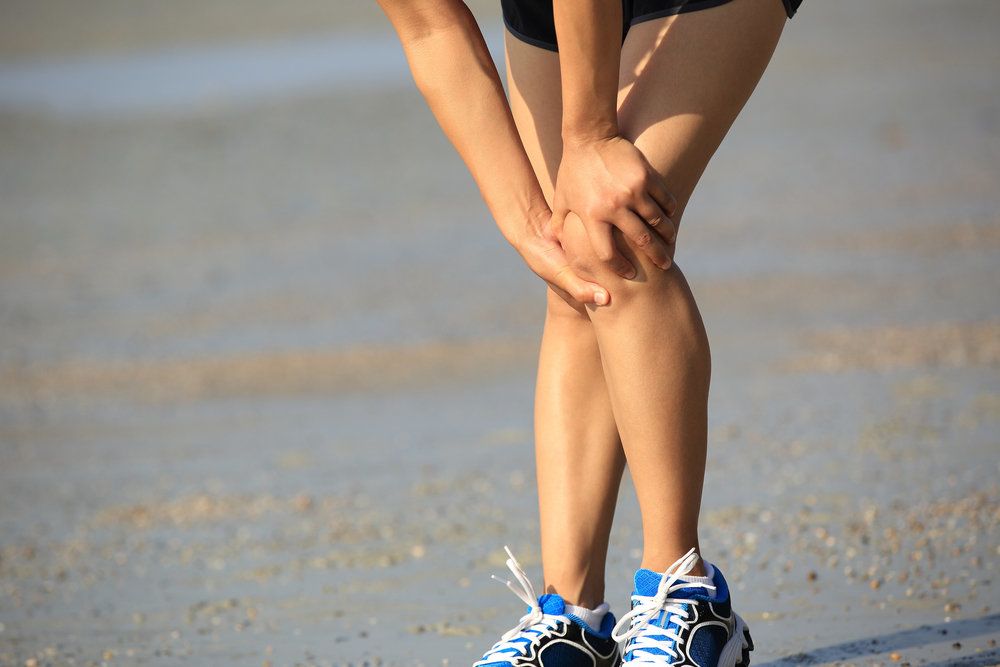 Also known as the anterior cruciate ligament, the ACL is one of the major ligaments in your knee. The ACL helps hold the femur and tibia in their proper position relative to the knee itself, and generally helps keep the knee bone stable. When an injury damages the ACL, you may experience pain and discomfort while walking, running, and other kinds of physical activities.
Also known as the anterior cruciate ligament, the ACL is one of the major ligaments in your knee. The ACL helps hold the femur and tibia in their proper position relative to the knee itself, and generally helps keep the knee bone stable. When an injury damages the ACL, you may experience pain and discomfort while walking, running, and other kinds of physical activities.
The team at our Austin, TX orthopedic surgery center can help with knee reconstruction and ACL replacement. Let’s cover some of the basics so you understand what this process involves.
What Causes ACL Injuries?
The vast majority of ACL injuries occur as a result of sudden starts/stops or changes in direction that strain the ligaments of the knee. Landing wrong can also injure the ACL, as can direct blows or trauma to the knee or legs.
When Is ACL Reconstruction Necessary?
ACL reconstruction is recommended when the injury to this ligament is significant. Some people may notice their injured knee buckle multiple times throughout the day when trying to accomplish simple, everyday tasks. Young people and people who lead active lifestyles should consider ACL reconstruction as this can improve overall mobility and quality of life.
Preparing for ACL Reconstruction
In the lead up to ACL surgery, patients will often undergo physical therapy. This helps restore strength and use to the knee, and allows the knee to ready itself prior to surgery. A few weeks of pre-op physical is common.
Patients will be asked to stop taking blood-thinning medications and supplements in the lead-up to surgery. Patients will also be asked to eat a healthy, balanced diet as the surgery date approaches.
What to Expect During ACL Reconstruction
ACL reconstruction is performed with the patient under general anesthesia. This helps reduce any discomfort or anxiety a patient may experience.
Using small incisions and an instrument called an endoscope, a surgeon is able to place a tissue graft to replace the damaged portion of the ACL. The graft will be secured using “tunnels” drilled into the tibia and femur. This graft will promote the growth of new ligament tissue in the proper place, restoring proper knee function in the process.
Recovery from ACL Reconstruction
Following ACL reconstruction surgery, patients will be asked to wear a knee brace or splint to help keep their leg stabilized. The graft will be able to heal faster when knee movement is restricted. Patients will get around using crutches following surgery.
In the days following ACL reconstruction, patients will want to get ample rest and keep their leg elevated. Swelling and discomfort can be managed with cold compresses and pain relievers used as directed.
ACL Reconstruction and Physical Therapy
As pat of recovery, ACL reconstruction patients will undergo additional physical therapy. This will help promote greater strength and use of the knee. The physical therapist can recommend various stretches and exercises that will be helpful for recovery.
The Results of ACL Reconstruction
After several weeks of healing and physical therapy, patients should notice improvements in strength and flexibility to their knee. For professional athletes, the should return to normal physical activities at a peak level by the end of eight months to a year.
Contact Orthopaedic Specialists of Austin
For more information about ACL surgery and other issues involving the knees and other joints, be sure to contact the team at Orthopaedic Specialists of Austin. We look forward to discussing your situation in more detail and helping restore function, mobility, and general quality of life.
